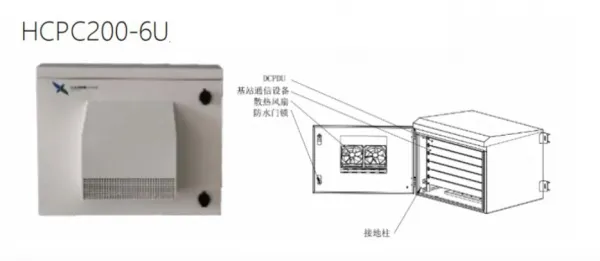Understanding Modern Telecom Infrastructure Development
The telecommunications landscape is rapidly evolving, with base station installations becoming increasingly crucial for network expansion and 5G deployment. These sophisticated pieces of equipment serve as the backbone of mobile communications, enabling everything from basic phone calls to advanced IoT applications. As network operators worldwide race to establish superior coverage, understanding the intricacies of base station deployment has never been more relevant.
The modern base station represents a significant technological leap from its predecessors, incorporating advanced features like massive MIMO, beamforming, and edge computing capabilities. These installations are essential nodes in the cellular network, processing and transmitting signals between mobile devices and the core network infrastructure.
Technical Components of 5G Base Stations
Essential Hardware Elements
At the heart of every base station lies sophisticated radio equipment that enables wireless communication. The primary components include antenna arrays, radio units, baseband processing units, and power supply systems. Modern 5G installations typically feature active antenna units (AAU) that combine traditional antenna elements with radio frequency components, optimizing performance while reducing overall installation footprint.
The baseband unit handles signal processing and serves as the brain of the base station, managing data transmission and reception. Power systems are designed with redundancy to ensure continuous operation, often incorporating backup solutions for critical sites.
Software and Control Systems
Contemporary base station installations rely heavily on advanced software systems for operation and maintenance. Network management software enables remote monitoring, configuration, and optimization of the equipment. Virtualization technologies allow for flexible resource allocation and network slicing, essential features for 5G networks.
Artificial intelligence and machine learning algorithms are increasingly integrated into base station control systems, enabling predictive maintenance and automated performance optimization. These smart features help reduce operational costs while maintaining optimal network performance.
Site Selection and Planning Process
Location Assessment Criteria
Selecting the ideal location for a base station requires careful consideration of multiple factors. Coverage requirements, population density, and terrain characteristics play crucial roles in site selection. Engineers must analyze radio frequency propagation patterns and potential interference sources while considering existing network infrastructure.
Environmental factors such as line of sight, building heights, and natural obstacles significantly impact site selection decisions. Urban installations often require creative solutions to balance coverage needs with aesthetic considerations and local regulations.
Regulatory Compliance Requirements
Installing a base station involves navigating complex regulatory frameworks. Operators must obtain various permits and approvals, including zoning clearances, environmental impact assessments, and electromagnetic radiation compliance certificates. Each jurisdiction may have specific requirements regarding installation height, visual impact, and safety measures.
Documentation and regular compliance monitoring are essential aspects of maintaining regulatory adherence. This includes periodic radiation level measurements and safety audits to ensure ongoing compliance with local and national standards.
Installation Cost Breakdown
Equipment and Hardware Expenses
The cost of base station equipment varies significantly based on specifications and vendor selection. Core components like antenna systems, radio units, and baseband equipment typically represent the largest portion of hardware expenses. Additional costs include backup power systems, cooling solutions, and security infrastructure.
Installation materials such as cables, connectors, and mounting hardware contribute to the overall expense. The trend toward integrated solutions, while potentially reducing installation complexity, can impact initial equipment costs.
Labor and Professional Services
Professional services constitute a significant portion of installation costs. This includes site survey fees, engineering design services, and specialized installation labor. Project management and quality assurance activities add to the service expense category.
Training and certification requirements for installation personnel contribute to labor costs. Ongoing maintenance contracts and emergency response services should also be factored into the total cost of ownership.
Maintenance and Optimization Strategies
Preventive Maintenance Protocols
Regular maintenance is crucial for ensuring optimal base station performance. Scheduled inspections cover physical infrastructure, electrical systems, and network equipment. Preventive maintenance programs help identify potential issues before they impact service quality.
Documentation of maintenance activities and equipment performance metrics enables trend analysis and informed decision-making. Remote monitoring capabilities reduce the need for frequent site visits while maintaining oversight of critical parameters.
Performance Optimization Techniques
Continuous optimization of base station performance involves regular analysis of network metrics and user experience data. Engineers employ sophisticated tools to adjust parameters such as antenna tilt, power levels, and coverage patterns for optimal service delivery.
Integration of self-organizing network (SON) capabilities enables automated optimization processes. These systems can dynamically adjust network parameters based on real-time performance data and changing usage patterns.
Frequently Asked Questions
What is the typical lifespan of a 5G base station?
A modern base station installation typically has an operational lifespan of 7-10 years, though this can vary depending on technological advancement pace and maintenance quality. Regular updates and component replacements can extend this lifespan significantly.
How does weather affect base station performance?
Base stations are designed to operate in various weather conditions, but extreme weather can impact performance. Rain and humidity can affect signal propagation, while high temperatures may require additional cooling system capacity. Modern installations include weather protection features and environmental monitoring systems.
What safety measures are implemented around base stations?
Base station installations incorporate multiple safety features, including restricted access systems, radiation exposure monitoring, and lightning protection. Regular safety audits ensure compliance with electromagnetic field exposure limits and occupational safety standards. Warning signs and protective barriers are maintained to prevent unauthorized access.

